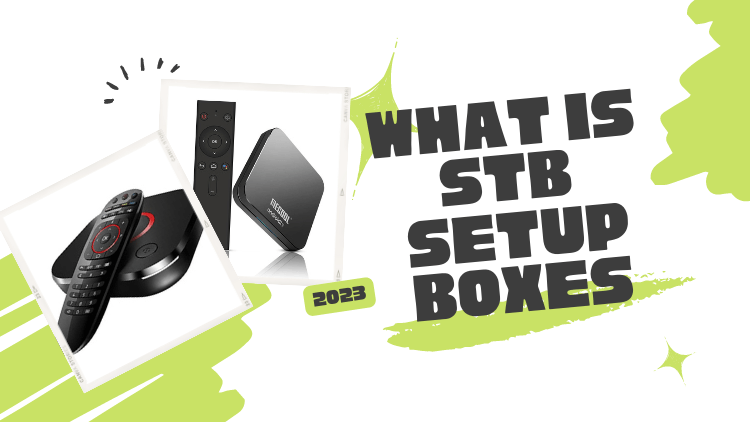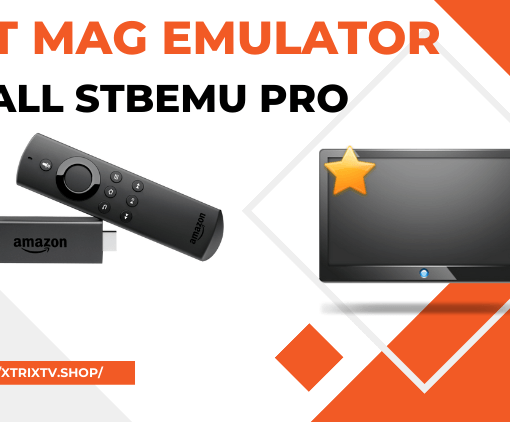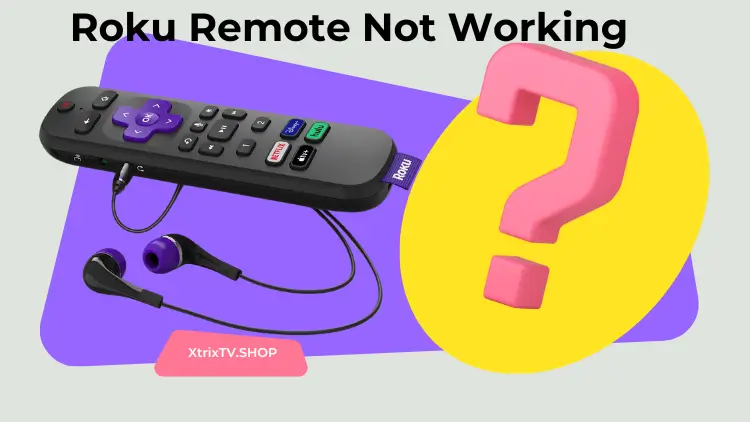Empowering Your Television in 2023: What is STB and How it Revolutionizes IPTV Subscription
In the dynamic world of entertainment, IPTV subscription services have become increasingly prevalent, transforming the way we experience television. At the heart of this revolution lies the Set-Top Box (STB), a powerful device that empowers your television with an array of features and possibilities. Whether you’re new to IPTV or seeking to deepen your understanding, this article will delve into the essence of STB and how it plays a pivotal role in enhancing your IPTV subscription experience in 2023.

Table of Contents
What is STB?
STB is a device that connects to a television and is used to receive and decode digital television signals. It serves as an intermediary between television and various content sources, such as cable, satellite, or internet-based services.
The primary purpose of a Set-Top Box is to convert digital signals into a format that can be displayed on a television screen. It typically connects to the TV via an HDMI or composite video cable and provides audio output through RCA or digital audio connectors.
STB come in different types and variations. Cable TV STBs are provided by cable operators and are used to receive and decrypt cable television signals. Satellite TV STBs, on the other hand, are used to receive and decode signals from satellite providers. Additionally, there are IPTV STBs that enable the streaming of television content over an internet connection.
Apart from signal reception and decoding, modern Set-Top Boxes often offer additional features and functionalities. These can include interactive features like electronic program guides (EPG), video-on-demand services, and the ability to pause, rewind, or record live TV. Some advanced STBs also provide internet connectivity, allowing users to access online applications, streaming services, and other interactive content.
Over the years, STB have evolved to keep up with technological advancements. They have become more compact, powerful, and integrated with other devices. For instance, many smart TVs now come with built-in STB capabilities, eliminating the need for a separate device.
While Set-Top Boxes continue to be popular for traditional television viewing, they face competition from alternative platforms such as smart TVs, streaming devices (e.g., Roku, Apple TV), and over-the-top (OTT) services like Netflix and Amazon Prime Video. Nevertheless, Set-Top Boxes still play a significant role in delivering and enhancing television content for millions of households worldwide.
Features of STB
STB offers a range of features that enhance the television viewing experience and provide additional functionalities. Here are some common features found in Set-Top Boxes:
- Signal Reception and Decoding: STBs are designed to receive and decode digital television signals from various sources such as cable, satellite, or internet-based services. They ensure that the signals are converted into a format that can be displayed on a television screen.
- Video Output: Set-Top Boxes typically provide video output options to connect to a television, including HDMI (High-Definition Multimedia Interface), composite video, or component video connections. These connections ensure high-quality video transmission to the TV.
- Audio Output: STBs offer various audio output options to connect to audio devices or TVs, such as RCA (analog) connectors or digital audio connections like S/PDIF (Sony/Philips Digital Interface Format). This allows for optimal audio transmission and compatibility with different audio systems.
- Interactive Program Guide (EPG): Many Set-Top Boxes feature an electronic program guide that provides a user-friendly interface displaying current and upcoming television programs. The EPG allows users to browse through channels, view program descriptions, and schedule recordings.
- Video-on-Demand (VOD): Some STBs support video-on-demand services, allowing users to access a library of movies, TV shows, and other video content. Users can select and stream content instantly, providing a convenient way to watch movies and shows at their preferred time.
- Time-Shifting and Recording: Set-Top Boxes with built-in storage or external storage options enable users to record live television programs for later viewing. Time-shifting features allow pausing, rewinding, or fast-forwarding live TV broadcasts, giving viewers more control over their viewing experience.
- Internet Connectivity: Advanced STBs may offer internet connectivity, allowing users to access online applications, streaming services, and other interactive content. This enables features like web browsing, social media integration, and streaming videos from online platforms.
- Parental Controls: STBs often include parental control features, allowing parents or guardians to restrict access to certain channels or content based on ratings or specific criteria. This ensures a safe and controlled viewing environment for children.
- Interactive Applications: Some Set-Top Boxes provide interactive applications and widgets, such as weather updates, news, sports scores, and social media integration. These applications enhance the viewing experience and provide additional information and entertainment options.
- Connectivity Options: Set-Top Boxes may include various connectivity options, such as USB ports, Ethernet ports, or Wi-Fi connectivity. These allow users to connect external storage devices, wireless adapters, or other peripherals to expand the functionality of the STB.
These features may vary depending on the specific model and type of Set-Top Box, as different providers and manufacturers offer different functionalities to meet the needs and preferences of users.
The advantages of using STB
- Access to digital television signals: STBs allow users to receive and decode digital TV signals, ensuring high-quality video and audio transmission.
- Wide range of channels and content: STBs provide access to various channels and content from different service providers, offering a diverse selection of options.
- Enhanced viewing experience: STBs offer advanced features like pausing, rewinding, and fast-forwarding live TV, as well as electronic program guides for easy show scheduling.
- Video-on-Demand (VOD) services: STBs support VOD services, granting users access to a vast library of movies, TV shows, and other video content for on-demand viewing.
- Interactive and online capabilities: Advanced STBs enable internet connectivity and access to online applications, including streaming platforms and interactive features.
- Recording and time-shifting: STBs with recording capabilities allow users to save their favorite shows for later viewing, and time-shifting features enable pausing, rewinding, or fast-forwarding live TV.
- Parental control and content filtering: STBs offer parental control features, allowing users to restrict access to specific channels or content based on ratings or criteria.
- Connectivity options: STBs provide various connectivity options, such as USB ports, Ethernet ports, or Wi-Fi connectivity, facilitating connections with external devices and expanding functionality.
- Integration with other devices: STBs can seamlessly integrate with home theater systems, gaming consoles, and smart TVs, enhancing the overall entertainment experience.
- Continuous technological advancements: STB technology evolves continuously, with regular feature updates and improvements, ensuring users can benefit from the latest advancements in the industry.
Advantages and disadvantages of STB
Here’s a table summarizing the advantages and disadvantages of Set-Top Boxes (STBs):
| Advantages | Disadvantages |
|---|---|
| Access to a wide range of content | Cost |
| Improved picture and sound quality | Limited content availability |
| Interactive Features | Dependence on service providers |
| Time-shifting capabilities | Complex setup and installation |
| Integration with other devices | Maintenance and updates |
Please note that the table provides a concise overview, and the specific advantages and disadvantages can vary based on the individual STB model and service provider.
Evolution of STB
- 1. Historical development of STBs: The Set-Top Box (STB) has undergone a remarkable evolution since its inception. Initially, STBs were introduced to improve television reception and tuning. With the transition from analog to digital broadcasting, digital STBs emerged, providing better picture quality and additional features like electronic program guides (EPG). As cable and satellite television gained popularity, dedicated STBs were developed to decode signals from these providers. Over time, STBs incorporated interactive features, enabling services like video-on-demand (VOD) and access to online applications.
- 2. Advancements in technology and their impact on STB: Technological advancements have greatly influenced the evolution of STBs. High-definition (HD) STBs were introduced to cater to the demand for higher-resolution content, delivering enhanced video quality. The integration of digital video recorders (DVRs) allowed users to record and store their favorite TV shows. The rise of internet-based television led to the development of IPTV STB, enabling the streaming of content over IP networks. Additionally, the emergence of over-the-top (OTT) streaming services brought about streaming devices that offer access to various streaming platforms. Advancements in technology continue to shape STB, with features such as 4K resolution, HDR capabilities, voice control, and artificial intelligence (AI) integration.
- 3. Integration with smart TVs and other devices: In recent years, there has been a trend towards integrating STB functionality into smart TVs and other devices. Many modern smart TVs come equipped with built-in STB capabilities, eliminating the need for a separate device. This integration offers users a streamlined and seamless TV viewing experience. STB has also been integrated with other devices like home theater systems, gaming consoles, and soundbars, allowing for a unified entertainment setup. This integration enables users to access a wide range of content and services from different sources through a single device or interface, enhancing convenience and user experience.
Overall, the evolution of STB has been shaped by historical development, advancements in technology, and integration with smart TVs and other devices. These factors have propelled STB from basic reception and decoding devices to versatile entertainment hubs, offering a multitude of features and options for users to enjoy their favorite content.
STB Challenges and Future Outlook
1. Competition from alternative platforms.
STB faces competition from alternative platforms such as smart TVs and streaming devices. Smart TVs offer built-in streaming capabilities and access to various apps, reducing the need for an additional STB. Streaming devices like Roku, Apple TV, and Amazon Fire TV provide direct access to streaming services, bypassing traditional cable or satellite TV providers. The competition from these platforms challenges STB to innovate and provide unique features to stay relevant in the market.
2. Evolving consumer preferences and demands.
Consumer preferences and demands for entertainment content have evolved over time. With the rise of on-demand streaming services and personalized content consumption, consumers expect flexibility and a wide range of options. They want convenient access to their favorite shows, movies, and online content. This requires STB to adapt and provide seamless integration with streaming platforms, personalized recommendations, and user-friendly interfaces to meet the evolving demands of consumers.
3. Potential advancements and future prospects of STB.
Despite the challenges, there are several potential advancements and future prospects for STB. These include:
- Enhanced Integration: STB can further integrate with other smart home devices, creating a unified entertainment ecosystem. This can include voice control, home automation integration, and compatibility with emerging technologies like virtual reality (VR) or augmented reality (AR).
- Improved Content Discovery: STB can leverage machine learning and AI algorithms to provide more accurate and personalized content recommendations. Advanced content discovery features can help users find relevant shows, movies, and other content based on their preferences and viewing habits.
- 5G and Internet of Things (IoT) Connectivity: The advent of 5G networks and the proliferation of IoT devices offer opportunities for STB to leverage faster and more reliable connectivity. This can enable seamless streaming, cloud-based storage,, and access, and enhanced interactive features.
- Hybrid Solutions: STB can evolve into hybrid solutions that integrate both traditional broadcast channels and online streaming services. This allows users to access a wide range of content from various sources through a single device, providing convenience and flexibility.
- Energy Efficiency and Sustainability: Future STB can focus on energy-efficient designs, reducing power consumption and contributing to environmental sustainability. This can involve using low-power components, standby modes, and implementing eco-friendly manufacturing practices.
Overall, the future outlook for STB lies in its ability to adapt to changing consumer demands, embrace technological advancements, and offer unique features and integration options. By staying ahead of the competition, addressing consumer preferences, and exploring new possibilities, STB can continue to play a significant role in delivering entertainment content to households around the world.
Video – Definition of What is Setup Boxes(STB)
Check out our video on the definition of What is Setup Boxes. You will understand STB more thoroughly.
Related:
- IPTV on Mi Box S: Everything You Need to Know
- How to install IPTV on Android TV Box?
- How to set up and use IPTV on Smart TV?
- How to install IPTV on Nvidia Shield
- How to Fix Firestick Not Working Issues
- How to Watch Pay-per-view For Free
- What you need to know about the best IPTV boxes
What are the types of STB?
Here’s a table summarizing the types of Set-Top Boxes (STBs) and their corresponding descriptions:
| Type | Description |
|---|---|
| Cable STB | Receives and decodes television signals from cable providers, offering access to a wide range of cable channels and services. |
| Satellite STB | Receives and decodes signals from satellite television providers, allowing users to access satellite TV channels and services. |
| IPTV STB | Streams television services over IP networks, providing on-demand content, live TV streaming, and interactive features. |
| Hybrid STB | Combines different technologies (terrestrial, cable, satellite, internet) to access multiple sources through a single device. |
| OTT STB | Also known as streaming devices, provides direct access to over-the-top streaming services like Netflix, Amazon Prime Video, etc. |
| Digital Terrestrial | Receives and decodes digital over-the-air television signals, commonly used in areas with digital terrestrial broadcasting. |
| Free-to-Air STB | External devices transform regular TVs into smart TVs, providing internet connectivity and access to streaming services. |
| HD STB | Supports high-definition television signals, providing enhanced video and audio quality for high-resolution content. |
| DVR STB | Equipped with built-in storage and recording capabilities, allowing users to record and store their favorite TV shows. |
| Smart TV STB | External devices transform regular TVs into smart TVs, providing internet connectivity and access to streaming services. |
FAQ
What does the STB do?
A Set-Top Box (STB) is a device used in the television and media industry to connect to a television. It receives digital signals and converts them into a format that can be displayed on the TV screen. STBs are commonly used for cable TV, satellite TV, and internet-based streaming services.
Which STB is best?
The best set-top box (STB) depends on individual preferences and needs. Here are some popular options:
- 1. Roku: Known for its user-friendly interface and extensive channel selection.
- 2. Apple TV: Integrates well with Apple devices and offers access to the App Store.
- 3. Amazon Fire TV: Offers a wide range of apps and services, and integrates with Alexa.
- 4. NVIDIA Shield TV: Powerful STB popular among gamers, support 4K HDR content.
- 5. Google Chromecast: Affordable streaming device that allows casting from other devices.
The best choice depends on your specific requirements and budget. Research features and user reviews to find the one that suits you best.
What is STB on TV?
STB on TV stands for Set-Top Box. A Set-Top Box is a device that connects to a television and allows it to receive and display digital television signals. It converts the digital signals into a format that can be viewed on the TV screen. The STB acts as an intermediary between the TV and the broadcast or streaming source, enabling access to various channels and services. It is commonly used for cable TV, satellite TV, and internet-based streaming services, providing viewers with a wide range of content options.
How does STB work?
A Set-Top Box (STB) works by receiving and processing digital signals to provide access to television content. Here’s a general overview of how an STB works:
- 1. Signal Reception: The STB receives digital signals from various sources, such as cable, satellite, or internet streaming.
- 2. Signal Decoding: The received digital signals are decoded by the STB, which converts them into a format that can be understood by the television.
- 3. Content Decryption: If the content is encrypted, the STB may have a decryption mechanism to unlock the encrypted signals, allowing access to premium or subscription-based channels.
- 4. Video and Audio Processing: The STB processes the video and audio signals to ensure they are in the correct format and quality for display on the television. This includes tasks like video upscaling, deinterlacing, and audio decoding.
- 5. User Interface: The STB has a user interface that is displayed on the television screen, allowing users to navigate through channels, access interactive features, and control the STB’s settings. This is typically done using a remote control or a user interface on the TV screen.
- 6. Channel and Content Selection: Users can select different channels, video-on-demand services, or streaming platforms through the STB’s user interface. The STB sends the corresponding requests to the service provider or content source.
- 7. Display and Audio Output: The processed video and audio signals are then sent from the STB to the television, where they are displayed on the screen and played through the speakers or audio output devices connected to the TV.
- 8. Additional Features: STBs may offer additional features like recording capabilities, time-shifting (pausing or rewinding live TV), internet browsing, streaming apps, and interactive services.
It’s important to note that the specific workings of an STB can vary depending on the type of service (cable, satellite, internet) and the features supported by the STB model.
Conclusion
As we stride into 2023, the Set-Top Box, coupled with a reliable VPN, continues to redefine the television landscape, bringing forth a new era of entertainment. Its ability to seamlessly decode digital signals, offer an extensive channel selection, and provide access to on-demand content has revolutionized how we engage with IPTV subscriptions. Whether you’re a dedicated IPTV enthusiast or someone considering exploring this immersive world, understanding the role of the STB, in conjunction with a VPN, is paramount to unlocking the full potential of your television and embracing the limitless possibilities of IPTV subscription services in 2023.




